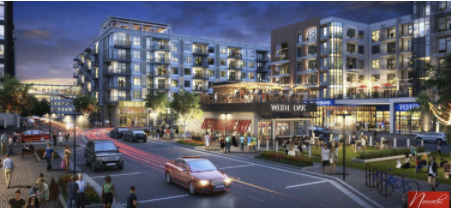3D Rendering https://nourachistudios.com/3d-rendering/ United States
Don't wanna be here? Send us removal request.
Text
3D Rendering

The Art and Science of 3D Rendering: Transforming Architectural Visualization
Introduction
3D rendering has revolutionized the architectural and design industries, allowing professionals to create highly detailed and realistic visual representations of structures and environments. Whether for residential, commercial, or urban projects, 3D rendering enhances the design process by providing a clear and immersive preview of a project before construction begins.
This article explores the significance of 3D rendering, the essential components of high-quality architectural visualizations, and the latest trends shaping the industry. By understanding the intricacies of this technology, architects, designers, and developers can communicate ideas more effectively and refine designs with precision.
The Importance of 3D Rendering
A well-executed 3D rendering serves multiple purposes. It provides a lifelike representation of a project, helping stakeholders visualize the final outcome with accuracy and clarity. This technology enables better decision-making, minimizes design errors, and improves collaboration between architects, engineers, clients, and contractors.
3D rendering also enhances marketing efforts. Developers and real estate professionals use photorealistic renderings to showcase properties before they are built, attracting potential buyers and investors. Additionally, high-quality visualizations help clients better understand spatial relationships, materials, and lighting conditions, making the design process more interactive and efficient.
Key Components of High-Quality 3D Rendering
Accurate Modeling
The foundation of any 3D rendering is precise modeling of architectural structures, furniture, and landscape elements.
High-detail modeling ensures realism and aligns the digital representation with actual construction plans.
Realistic Textures and Materials
The selection of appropriate textures, such as wood, metal, glass, and concrete, enhances the authenticity of the rendering.
Advanced rendering techniques, including bump mapping and displacement mapping, add depth and realism to surfaces.
Lighting and Shadows
Proper lighting setup is essential for creating realistic scenes. Natural lighting, artificial lighting, and reflections must be accurately simulated.
Soft shadows and global illumination contribute to the depth and atmosphere of a rendering.
Environmental and Contextual Elements
Surrounding landscapes, trees, roads, and neighboring buildings provide context to the rendering, making it more relatable and functional.
Weather conditions, sky effects, and time-of-day adjustments further enhance realism.
Perspective and Composition
Well-framed perspectives help highlight key architectural features and improve visual storytelling.
A balance between wide-angle views and close-up details ensures comprehensive representation of the design.
Animation and Virtual Reality Integration
Walkthrough animations and virtual reality (VR) experiences allow clients to explore spaces dynamically.
These interactive elements provide a better sense of scale and usability within a design.
Trends in Modern 3D Rendering
Real-Time Rendering and AI-Powered Tools
Software like Unreal Engine and Lumion enables real-time rendering, significantly reducing processing times.
AI-driven rendering tools automate complex processes, enhancing efficiency and realism.
Sustainable and Eco-Friendly Design Integration
3D renderings increasingly incorporate sustainable features, such as green roofs, solar panels, and energy-efficient materials.
Environmental impact simulations help architects create eco-conscious designs.
Augmented Reality (AR) and Virtual Reality (VR) Applications
AR and VR technologies allow users to interact with 3D models in a fully immersive way.
These applications are particularly valuable for client presentations and architectural planning.
Hyper-Realistic Rendering with Ray Tracing
Ray tracing technology enhances lighting accuracy, creating stunningly realistic reflections and refractions.
This advanced rendering method is now more accessible with GPUs that support real-time ray tracing.
Conclusion
3D rendering is a powerful tool that bridges the gap between concept and reality in architectural visualization. By utilizing advanced modeling techniques, realistic textures, and immersive technologies, architects and designers can create compelling visualizations that drive decision-making and enhance project presentations.
As the industry continues to evolve, integrating AI, real-time rendering, and virtual experiences will redefine how projects are planned and communicated. Whether designing a new home, commercial complex, or urban landscape, high-quality 3D rendering ensures clarity, creativity, and precision in every architectural endeavor.
1 note
·
View note